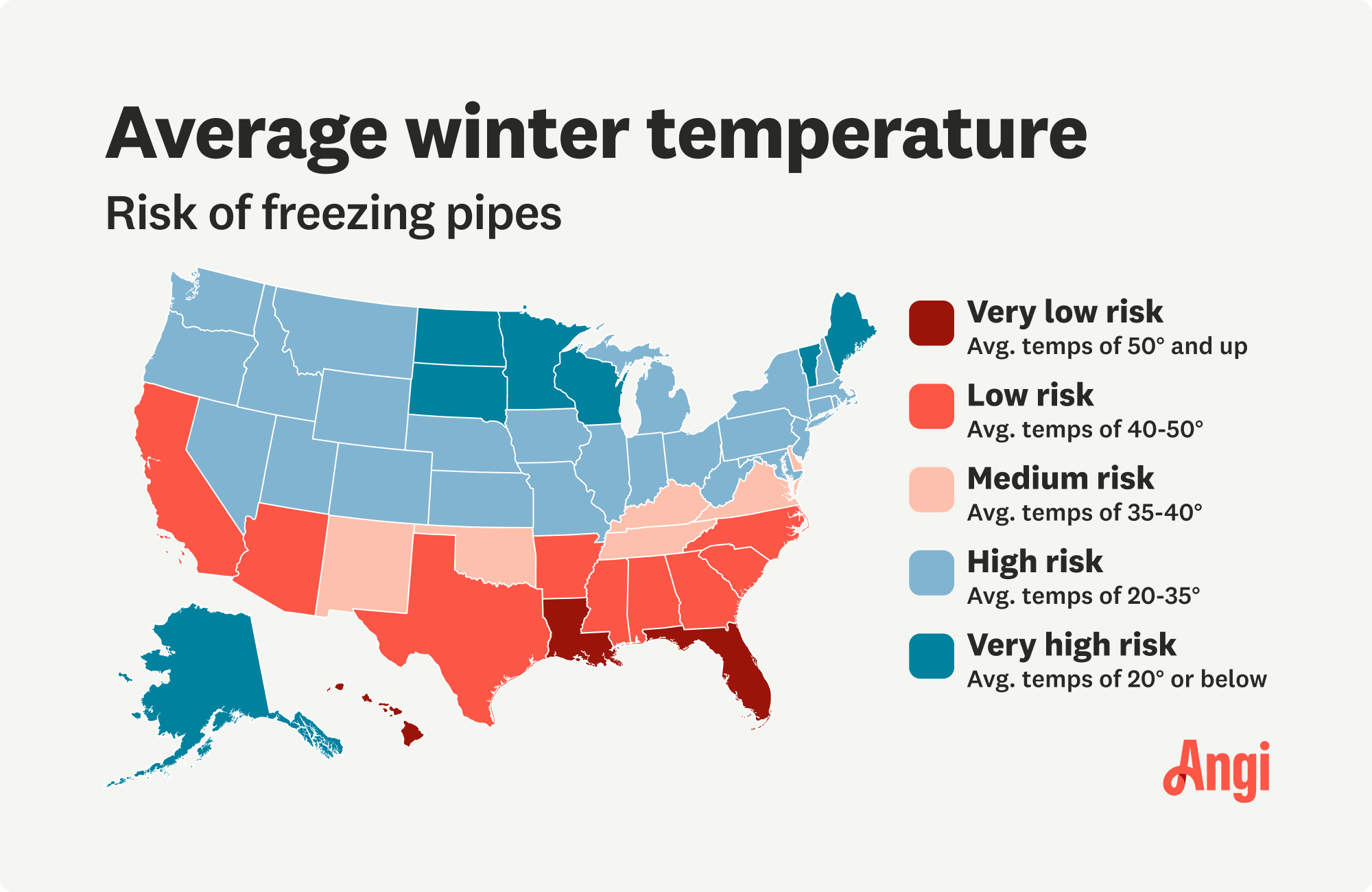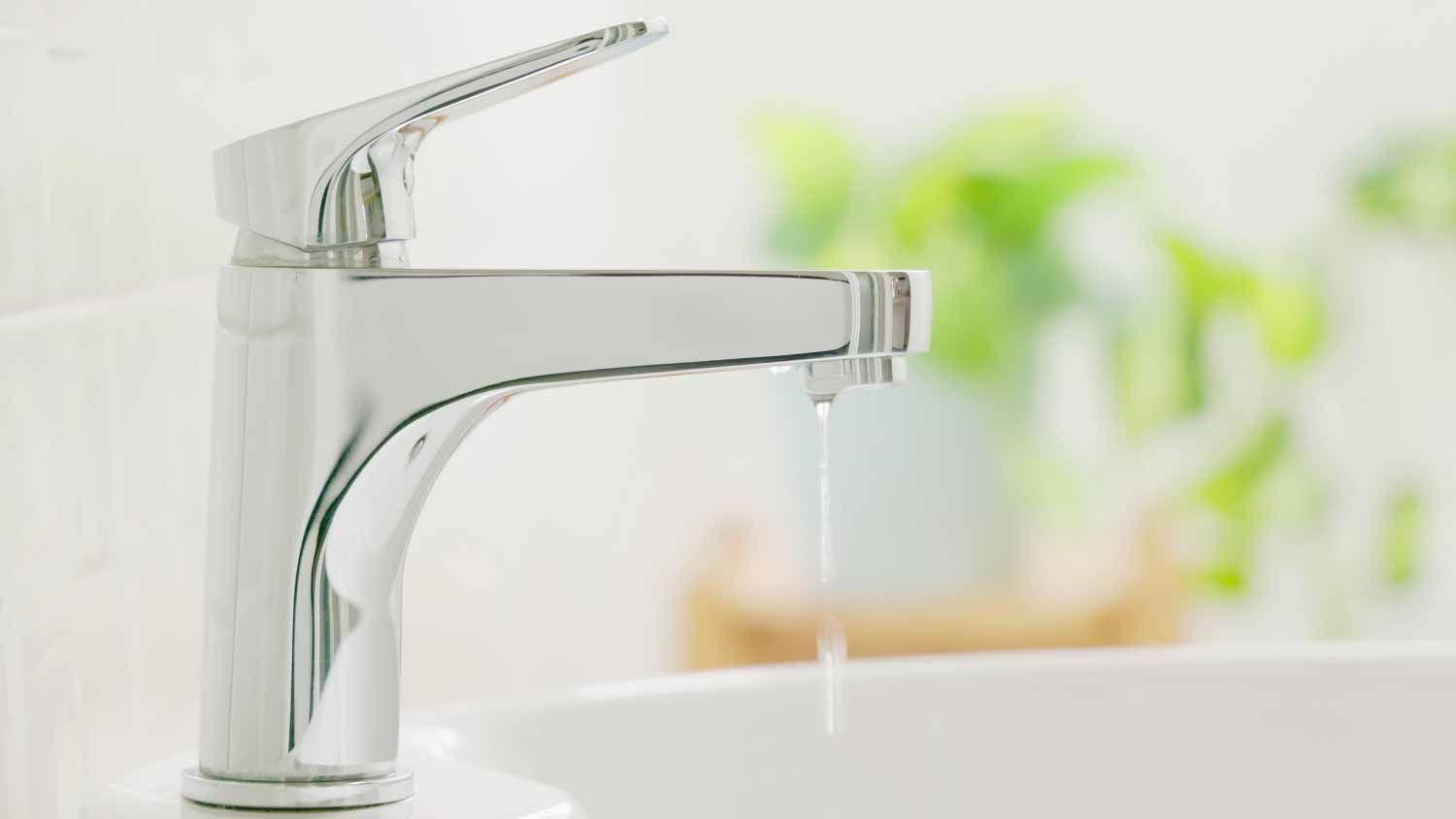
The cost to cap a gas line is relatively low, as plumbers can handle the job in roughly an hour. We break down cost factors and DIY considerations.
Don’t let cold temperatures burst your bubble or your pipes


Drip faucets when temperatures fall below 20 degrees Fahrenheit for three hours or more.
Drip faucets when temperatures fall below 32 degrees for four hours or more.
Drip faucets if your power goes out during freezing temperatures.
Uninsulated pipes and pipes near the exterior of your home are the most vulnerable.
When winter rolls around, the sweaters and mugs of hot cocoa come out, but so does the risk of a burst pipe. When water freezes inside your home’s plumbing, it expands and can cause pipes to crack or burst. Luckily, dripping faucets during freezing weather can help prevent issues. This guide will help you figure out when to drip faucets and which faucets to drip for the best protection against winter weather.
The temperature at which pipes freeze depends on several factors, from the type of pipes (PEX has more freeze resistance than copper) to insulation and location. Most insulated pipes won’t freeze until temperatures fall below 20 degrees. Uninsulated pipes or pipes near the exterior of your home could freeze as soon as temperatures fall below freezing, which begins at 32 degrees.
As a general rule, drip your faucets when:
Temperatures fall below 32 degrees for at least four hours
Temperatures fall below 20 degrees for at least three hours
Your power goes out and temperatures are below freezing
Keeping an eye on the forecast and knowing the average winter temperatures where you live will help you decide when to drip your faucets.

Deciding which pipes to drip depends on the layout of your plumbing. You’ll want to drip one faucet in each area of your home. For example, you can drip one faucet on each level of a multi-story home, in your main living area, and extensions or extra wings.
That said, pay extra attention to pipes that are most likely to freeze. Check out your home plumbing and drip faucets that are connected to pipes in exposed areas like:
Unheated sections of your home
Exterior walls
Basements
Garages
Attics
Crawl spaces
If possible, choose faucets that allow you to control the hot and cold taps separately so you can ensure that both lines have adequate drip.

Again, the ideal number of faucets to let drip depends on your home’s plumbing. In addition to dripping one faucet in every area of your home, you’ll want to ensure every pipe in an exposed area is connected to a dripping faucet—including hot and cold lines.
If you live in a cold climate, winterize and cover outdoor faucets to help prevent ice buildup. Talk to a plumber if you’re unsure how of many faucets and outdoor spigots you should drip.
Learning how to drip faucets is simple: Aim for a small, steady drip (about one drip falling every three seconds).
You’ll also need to ensure you drip hot and cold water since the individual lines could freeze. If your faucet has two taps, drip both. If you have a single-handle faucet, like in most kitchens, make sure the water is set to an even mix of hot and cold to keep water flowing from both lines.
Once temperatures are consistently above freezing, you can stop dripping your faucets. Check the forecast and make sure that temperatures during the daytime and nighttime stay above 32 degrees.
In addition to knowing how to drip faucets during a freeze, there are a few other things you can do to keep your pipes from freezing:
Set the thermostat: Set your thermostat to a minimum of 55 degrees during the winter. Some homeowners try to save money by turning off their heating in certain rooms or when they’re away, which could cause pipes to freeze.
Open cabinets: Open cabinets and closets, especially those located near exterior walls, to allow warm air to circulate.
Use a space heater: If you’ve had issues with frozen pipes in the past, you probably already know the problem areas in your home. You can use portable space heaters near pipes that are most likely to freeze, especially if temperatures are particularly cold.
Shut off water: If you’re leaving for an extended period, you can turn off the main water supply to your home to prevent frozen pipes. Run your faucets to drain the pipes so there is no standing water that can freeze while you’re away.
Flush toilets: Regularly flush toilets with piping to exterior walls to promote the flow of water.
In the event of a plumbing emergency, it is critical to know the location of your water main shut-off valve in case you need to quickly stop water from flowing into your home. If you are unsure, a pro can help you locate the valve and show you how to operate it.
Call a plumber near you if you notice repeated issues from frozen pipes, such as blocked sinks, leaks, or unusually cold water. Certain pipes may require extra insulation or a swap, like replacing copper pipes with PEX.
From average costs to expert advice, get all the answers you need to get your job done.

The cost to cap a gas line is relatively low, as plumbers can handle the job in roughly an hour. We break down cost factors and DIY considerations.

This guide to toilet installation cost covers what you can expect to pay when adding a new toilet to an existing or new bathroom.

The cost to add plumbing to a detached garage depends on several factors, including the type of plumbing and the garage's distance from your home.

Learn how to cut PVC pipe with ease and efficiency. Our guide will show you how to tackle your PVC pipe project like a pro.

Accidents can cause your sewer pipe cap to break. While fixing it is essential, don’t jump right in. This guide will prepare you with must-know tips.

Range hood dripping water? You may have damaged flappers or need more insulation. Find out what’s causing the problem and call the right professional to fix it.